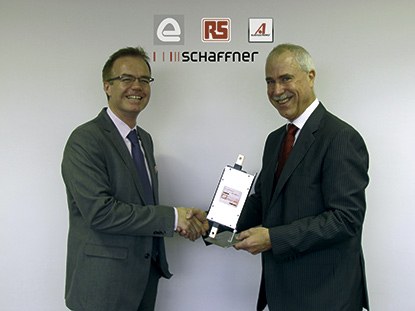Technology has never been more exciting than now, and it will become more so as we continue to seek better ideas and innovations that help us improve our lives. We always try to find gadgets that satisfy our insatiable appetite for new gadgets, like smartphones, mini drones, cameras, and other “cool and trendy” items that make us feel good. What many people don't realize is the processes that each product must go through to ensure its usability and functionality for its intended purpose. And behind each of those steps is a test engineer.
Well-trained test engineers are in short supply in the industry. Unfortunately, among the recent engineering graduates each year, not many decide to pursue a career as a test engineer, unaware that they have a tremendous opportunity for professional growth before them.
Each product must undergo several steps in each phase of production, from prototype to new product introduction to mass production (see Figure 1).
How to become a test engineer
So how does a recent grad become a test engineer? Let's say he just got his Electronic Engineering degree and is trying to get a job.
While searching for a job on Google, thinking about the big electronics companies, you might stumble upon an offer for a test engineer. You will find the job description quite interesting, with opportunities to travel and learn about new technologies, work closely with other professionals such as engineers and design managers, or even with other test engineers from other continents. However, there are probably things that you have never heard of, because they are topics that may not have been specifically covered during your Electronic Engineering studies. Let's look at some of those issues.
In-Circuit Test System (ICT)
In-circuit testing (ICT) is a popular testing methodology used in the manufacturing of all printed circuit boards for its ability to immediately find manufacturing faults such as opens, shorts, component misvalues, and board components. plates that do not work well. ICT has been used since the boom in electronics manufacturing in the early 2s, and the technology used has been constantly upgraded to keep up with current technology. Figure XNUMX shows some of the ICT systems commonly used in the electronics mass manufacturing industry.
The following describes some tests that can be performed with ICT systems (see Figure 2 for a typical ICT system) to test a printed circuit board during electronics manufacturing.
- Short Circuit and Open Tests: Non-energized tests that look for unexpected shorts and opens on the printed circuit board.
- Analog in-circuit tests: non-current tests that measure the value of analog devices such as resistors and capacitors.
- Vector Non-Vector Testing Extended Performance Testing (VTEP) - Non-current testing of the connectivity of each of a device's connections to the circuit board. The system uses the VTEP hardware to measure the capacitance of a device connection with the VTEP probe to determine connectivity.
- Analog Functional Tests: Live tests that apply a stimulus to a device or circuit under test and measure its response.
- Mixed tests: live tests that apply digital and analog functional test methods to a device or circuit.
- Digital in-circuit tests: live tests that apply vector patterns to the device and verify the expected results.
- Digital in-circuit techniques are also used to program Flash devices and Programmable Logic Devices (PLDs).
- LED tests: measure the color and brightness of LEDs to a higher precision during in-circuit testing. It allows to obtain the value of the color and the luminosity of the LEDs in nm and µW/cm2 with accuracies of ±3 nm and ±10%, respectively.
The software application of an ICT can be installed on computers with Windows and Mac operating systems.
A typical interface is shown in Figure 3 showing a graphical user interface with which a test engineer develops the test program to be run on an ICT system.
peripheral tracking
The Joint Testing Action Group (JTAG), made up of companies that share similar interests, standardized this technology in the IEEE 1149.1 standard published in 1990. For this reason, edge tracking is sometimes called JTAG.
Peripheral tracing is most commonly associated with technology that allows interconnection between integrated circuits to be tested. The test is mainly focused on identifying short-circuit or open-circuit defects, and is based on the peripheral trace cells designed in each connection of the integrated circuit. These peripheral tracking cells can be input cells, output cells, or bidirectional cells. With this ability to emit or receive signals at each connection and using the unique pattern generation algorithm, users can identify the location of defects.
Efforts have continued for decades, with innovations over the years to derived solutions that are based on the IEEE 1149.1 standard. One such innovation is Cover-Extend technology, which uses capacitive sensor plates to pick up stimulus signals from peripheral tracking emitting devices. Another innovation is the use of Silicon Nails (“silicon nails” or virtual connections) that allow testing on devices that do not support peripheral tracking. Other innovations include the IEEE 1149.6 standard, which tests high-speed differential signals, and many others. Figure 4 shows a typical peripheral trace system that allows testing of printed circuit boards using only four mandatory test access port (TAP) signals to test interconnection between components.
The peripheral tracking system incorporates a software interface (see Figure 5) that allows the test engineer to generate test programs for the printed circuit board.
Typical Job Description of a Test Engineer
- Develop and debug ICT and peripheral trace tests for printed circuit boards.
- Collaborate with design engineers and product development teams
- Document problems or failures identified during test development, debugging, and testing.
- Make recommendations to the product development team on improvements to Designs for Tests (DFTs).
Where do test engineers work?
Test engineers work in companies that develop and test electronic products, including network communications, computer servers, smartphones, tablets, computer motherboards, automotive electronics, and electronics manufacturing such as consumer electronics manufacturers. contract (CEM) and original design manufacturers (ODM). A test engineering job is both challenging and rewarding. Test development and debugging processes can be demanding, but the nature of the job provides you with many opportunities for growth:
- Learn about new technologies incorporated into products that have not yet been released.
- Apply the basic knowledge about electronic circuits that you have learned during your studies.
- Analyze the causes of component failure during the test debugging process of the test program you have created.
- Use other electronic instruments, such as oscilloscopes, digital multimeters, logic analyzers, and others, to help you troubleshoot tricky faults.
- Travel to many cities and countries in Asia, Europe and America, and visit various factories where products are made.
Personally, after all this hard work, you'll be greatly rewarded when you see the product you've been working on on the market, because you know you're part of the team that made that product possible.







